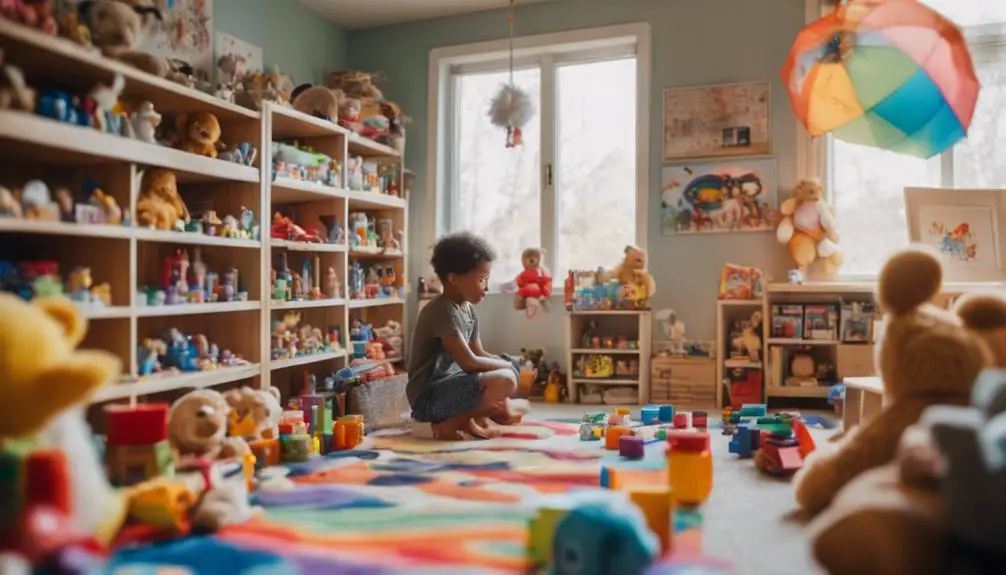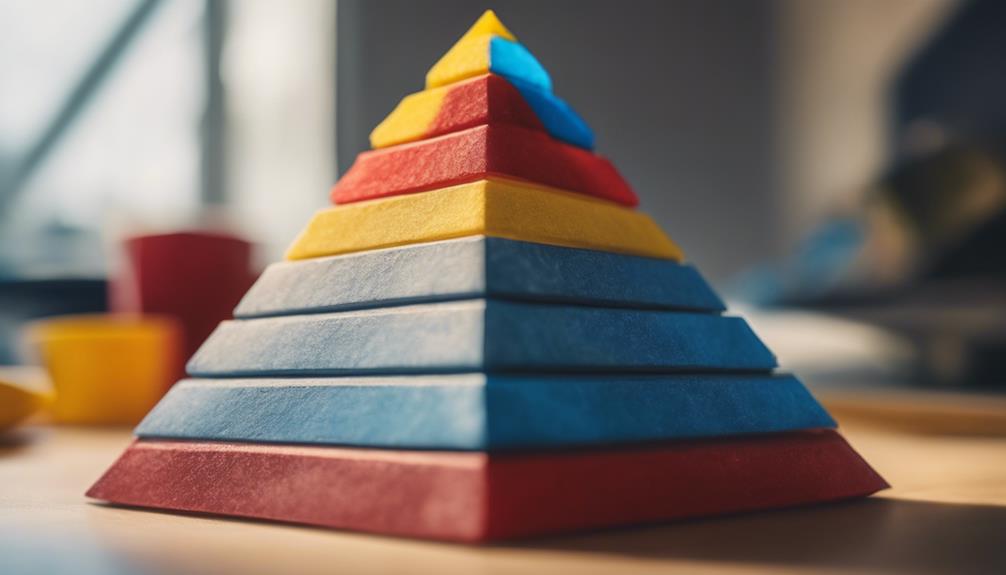It may seem inappropriate to discard old family photographs, yet sometimes, letting go can be a beneficial decision. It’s crucial to understand that not every picture carries the same emotional significance. Holding on to excessive clutter can hinder your ability to appreciate the photographs that truly matter.
As you assess which images genuinely narrate your family’s journey, consider the meaning of preserving memories. Establishing clear criteria for deciding which photos to retain can help you honor your family’s history while also creating space for new experiences.
For instance, focus on photographs that capture significant milestones, such as weddings, birthdays, or family gatherings. These images often hold more emotional value compared to everyday snapshots. You might also prioritize photos that include beloved family members who have passed away, as these images can serve as treasured reminders of their impact on your life.
When it comes to organizing your collection, think about digitizing photos that you want to keep but lack physical space for. This way, you can safeguard these memories while reducing physical clutter. Consider using a photo management app or service that allows you to create digital albums, making it easier to revisit and share cherished moments without overwhelming your living space.
Ultimately, making thoughtful decisions about which family photos to keep can lead to a more organized and meaningful collection, allowing you to celebrate your family’s legacy while making room for new memories.
Understanding Sentimental Value
When considering old family photos, it’s important to recognize their sentimental value before deciding their fate. These images often act as powerful triggers, bringing back memories that contribute to your family’s unique narrative. A faded photograph can evoke memories of shared laughter, times of sorrow, or significant milestones. Acknowledging these moments helps you appreciate the complex family dynamics that have shaped your life.
In the fast pace of modern life, the importance of these images can easily be overlooked. Each photograph represents a fragment of your heritage, connecting you to your roots and the individuals who’ve influenced your identity.
Making choices about what to keep or discard is a personal journey. Reflecting on the significance of each photo can empower you to make informed decisions. For instance, if a particular image brings you joy or nostalgia, it may be worthy of a spot in your collection. On the other hand, if certain photographs no longer hold meaning, it’s perfectly acceptable to part with them.
Understanding the sentimental value of these images helps you curate a collection that not only reflects your personal journey but also honors your family’s history.
The Role of Family Photos
Family photos act as a powerful visual narrative, capturing moments that define our identities and heritage. They go beyond mere images; they represent a part of our history, linking us to our roots and the stories that shape who we are. When you view a family photo, you encounter a narrative that transcends time, connecting generations.
These images facilitate the sharing of family histories, allowing individuals to recount tales of joy, achievements, and even hardships. Each photo serves as a connection between the present and the past, enhancing our understanding of family ties. For instance, a picture from a family reunion can evoke memories of laughter and togetherness, reinforcing relationships among relatives.
In a world that can often feel overwhelming, family photos offer a sense of stability and continuity. They remind us of shared experiences and treasured moments.
Preserving these images empowers you to explore and celebrate your heritage, ensuring that your family’s stories endure. When considering what to do with those old family photos, reflect on their importance in maintaining your family’s legacy and the rich narratives waiting to be shared.
Emotional Attachment to Memories
When you glance at old family photographs, a deep sense of connection often arises from the treasured memories they encapsulate.
These pictures do more than merely freeze moments in time; they embody your family’s heritage and legacy. The act of parting with them can stir up profound feelings of loss, making it challenging to determine which photos to keep and which to let go.
Each image serves as a reminder of shared experiences, familial bonds, and milestones that have shaped your life. For instance, a snapshot from a family vacation might evoke laughter and warmth, while a portrait from a past celebration can remind you of the love that has surrounded you through the years.
Understanding the significance of these memories helps ease the decision-making process, allowing you to honor your family’s history while also making space for new experiences.
Cherished Memories and Connections
Many individuals cling to old family photos because they stir strong emotions and memories that shape who we are. These images create tangible links to our history, allowing us to hold onto treasured moments that resonate within us. As you sift through those worn photographs, you may find yourself transported to important events that have played a crucial role in forming your identity.
Consider these emotional anchors:
- The joy shared at family gatherings, where laughter fills the air.
- The comfort of a loved one’s embrace, forever captured in a moment.
- The significant milestones celebrated, from birthdays to graduations.
- The faces of those who’ve guided your journey, filled with wisdom and affection.
These memories transcend mere images; they represent the preservation of experiences and emotions that enrich our lives. Letting go of them can feel like losing chapters of your narrative.
While the desire to declutter is understandable, it’s essential to recognize that these photographs encapsulate the essence of your experiences. They serve as reminders of love, happiness, and valuable lessons learned throughout your life.
Rather than discarding them, consider how they connect you to your past and the relationships that have influenced your journey.
Generational Legacy and Heritage
A generational legacy transcends the mere act of passing down physical items; it embodies the deep emotional connections tied to memories that anchor us to our origins. Old family photographs serve not only as images but as portals to our family identity, encapsulating the stories that have shaped our lives. Each picture holds cultural significance, preserving moments that echo our heritage and the values that define our existence.
Looking at a worn photograph can evoke a wave of nostalgia, bringing back recollections of shared laughter, love, and the challenges faced by those who preceded us. These images forge a bond with our ancestors, reinforcing our unique position within a lineage that spans generations. They symbolize the perseverance and strength of our family, illustrating the journey that has led us to where we are today.
Choosing what to preserve can be challenging, yet it’s crucial to ponder the emotional significance of these memories. They aren’t mere artifacts; they’re integral parts of our identity. Retaining these photographs safeguards the essence of our family’s narrative, ensuring that their legacy endures. This practice fosters a sense of belonging and continuity, helping us navigate an ever-evolving world.
For instance, consider creating a dedicated family photo album or digital archive that showcases these treasured moments. This not only organizes your memories but also allows future generations to connect with their roots.
Investing in quality photo storage solutions, such as acid-free albums or cloud services, can further protect these valuable pieces of history.
The Pain of Loss
Letting go of old family photos can evoke a profound sense of loss, as these images are often intertwined with treasured memories and important moments in your life. The emotional connection you form with these pictures is a natural response, and it’s vital to recognize this attachment as part of your healing journey. Each photo may symbolize a moment you wish to hold onto forever, making it challenging to part with them.
These images serve as a reflection of your life in various ways:
- Milestones: They capture significant events like birthdays, graduations, and weddings that have shaped your path.
- Loved Ones: They showcase the faces of family and friends who’ve played a crucial role in your story.
- Traditions: They remind you of celebrations and gatherings that foster joy and a sense of belonging.
- Memories: They evoke everyday moments that bring back feelings of nostalgia and simpler times.
As you go through this emotional healing process, it’s important to accept feelings of sadness. Acknowledging these emotions can lead to a sense of liberation in the act of letting go.
Rather than viewing it solely as a loss, consider it a step toward creating new experiences. You can pay tribute to the past while making room for future memories, allowing your heart the opportunity to heal and grow.
When to Consider Decluttering
When the accumulation of old family photos starts to crowd your living space, it signals a need to consider decluttering. A spacious, airy environment is desirable, and sometimes that requires parting with certain items. Before beginning this process, assess your emotional readiness. Are you willing to sort through memories and make difficult decisions? Your mindset is crucial for successful decluttering.
Here are some indicators that it’s time to declutter:
| Indicators for Decluttering | Recommended Actions |
|---|---|
| You haven’t accessed them in years | Allocate a specific day to review and sort through them. |
| They occupy valuable space | Designate a proper storage area for what you wish to keep. |
| The sheer volume feels overwhelming | Select a handful of favorites to retain. |
| They cause more stress than happiness | Reflect on what truly brings you joy and satisfaction. |
Recognizing these signs allows you to reclaim your space and mental clarity. Taking action not only helps you organize but also fosters a more joyful and less cluttered living environment.
Exploring Alternatives to Disposal
Before discarding those cherished family photos, think about some innovative options.
You could convert them into digital format, allowing for easier sharing and preservation for generations to come. This process not only safeguards your memories but also makes them accessible anytime.
Alternatively, consider transforming these images into artwork or one-of-a-kind gifts. For instance, you might create a collage that captures special moments or print them on items like calendars or tote bags.
This way, you keep the essence of those memories alive in a fresh and meaningful manner.
Digitizing Your Memories
Preserving your memories through digitization can revitalize old family photos that might otherwise be discarded. Converting these images into digital formats not only safeguards them but also allows for convenient organization and sharing with family and friends.
Here are several compelling reasons to begin the digitization process now:
- Memory Preservation: Safeguard your family history in a format that won’t deteriorate over time, ensuring future generations can connect with their roots.
- Remote Access: Store your photos in the cloud, enabling you to access them from anywhere and eliminating the burden of physical storage.
- Image Enhancement: Repair and restore damaged photos, reviving the colors and details that make your memories vivid.
- Curated Digital Albums: Assemble stunning collections that can easily be shared with others, making it simple to relive cherished moments.
Utilizing tools such as digital scanners and photo editing software allows you to convert your treasured prints into high-quality digital files.
Implementing a structured file organization system helps you easily locate and share these memories. Furthermore, employing reliable backup solutions ensures that your precious moments remain safe and secure.
Embrace the joy of sharing memories in a digital format, allowing your family history to shine brightly in the online world.
Creative Repurposing Ideas
After digitizing your old family photos, think about how to creatively use the physical copies instead of discarding them. There are numerous enjoyable photo crafts that not only pay tribute to your memories but also showcase your creativity.
For example, you could assemble a distinctive photo collage or design a scrapbook that narrates your family’s story in a lively, artistic manner.
Another option is to convert your photos into artistic displays. Select a few favorites to frame and arrange them on a gallery wall that embodies your family’s character.
Alternatively, consider using a large canvas to create an eye-catching piece of art by printing your photos in a grid format.
If you’re ready for a creative challenge, consider crafting custom greeting cards using your old photos. These cards provide a personal touch for any occasion, allowing you to share treasured memories with friends and family.
This approach not only adds sentiment to your correspondence but also gives a new life to your cherished images.
The Impact of Digital Storage
Digital storage has significantly transformed how we keep our family memories. With the convenience of modern technology, capturing, storing, and sharing those treasured moments has never been easier. Gone are the days of bulky photo albums collecting dust; today’s digital solutions allow for safe, accessible memories right at our fingertips.
The emotional advantages of digital storage are noteworthy. First, it offers preservation by safeguarding photos from fading or physical damage, ensuring that future generations can appreciate them.
Accessibility is another key benefit, as you can retrieve your memories instantly from anywhere, allowing for spontaneous reliving of those special moments.
Sharing becomes effortless, enabling you to connect your family’s journey with loved ones, regardless of distance.
Furthermore, organization tools let you categorize and tag your photos, making it simple to find that perfect memory in no time.
Engaging with digital storage empowers you to curate your family’s legacy without the hassle of physical clutter. This approach allows you to focus on what’s most meaningful to you, ensuring that those memories stay vibrant and alive for years to come.
Embrace the digital age and celebrate your family’s story with the ease and joy that modern technology provides.
Creating a Memory Box
Creating a memory box serves as a valuable method to safeguard your family’s history. Begin by choosing photos that hold significant meaning and truly represent cherished moments. Organize your collection in a manner that narrates your family’s story, allowing you to reflect on the journey through time. This method not only protects your memories but also makes it convenient to revisit them whenever you wish.
Consider including items such as handwritten letters, postcards, or small mementos that evoke specific memories. For example, if a particular trip was special to your family, include souvenirs from that trip, alongside photographs that capture the joy of those moments. You might also add a journal where family members can write their thoughts and feelings about the memories represented, making the box even more personal and rich in detail.
When selecting a container for your memory box, opt for one that’s sturdy and visually appealing, such as a wooden or decorative box that complements your home decor. This can enhance the experience of exploring your family history, making it a beautiful addition to your living space.
Preserving your family’s legacy in this way is important because it creates a tangible link to the past, allowing future generations to understand their heritage. It fosters a sense of belonging and continuity, reminding everyone of the shared experiences that shape your family’s identity.
Selecting Meaningful Photos
When selecting meaningful photos for your memory box, prioritize images that stir strong emotions or capture pivotal moments in your family’s history. This thoughtful process of photo curation is essential for creating a collection that truly represents you and your loved ones.
Consider including these four types of photos:
- First Family Vacation – Recall the laughter and adventures that defined your family’s initial getaway together. These images can remind you of the joy of exploring new places as a unit.
- Milestone Celebrations – Document the happiness found in significant occasions like birthdays, graduations, and anniversaries. These photos serve as reminders of accomplishments and shared joy.
- Everyday Moments – Capture candid shots that illustrate the essence of your family’s daily life. These seemingly ordinary images often reveal the most about your family’s unique character and shared experiences.
- Generational Portraits – Include images that connect different generations within your family. These pictures highlight your family’s legacy and the bonds that transcend time.
As you review your photo collection, embrace the opportunity to discard images that don’t evoke joy or significance. This memory box is a personal treasure, meant to reflect the love and memories that empower you.
Thoughtful curation leads to a rich collection of shared experiences and emotions, serving as a beautiful reminder of your family’s journey. Cherish these moments as they inspire future generations.
Organizing Your Collection
When organizing your collection, creating a memory box is vital for preserving your photos and narrating your family’s story. Start by collecting your photos and engaging in family photo sorting. This step helps you pinpoint the images that hold the most significance for you.
Implement photo categorization methods, such as grouping by events, dates, or family members, to streamline the sorting process and make it more enjoyable.
After sorting, select a robust box that resonates with your family’s aesthetic. This box should be something you value just as much as the memories it contains.
Consider incorporating labels or dividers to facilitate the easy retrieval of specific photos in the future. This way, when you wish to revisit those cherished moments, you won’t need to sift through a disorganized mess.
Including other memorabilia, such as letters, postcards, or keepsakes, enhances your memory box and enriches your family’s narrative. These items provide context and depth, contributing to a more vivid recollection of your family’s history.
Sharing Photos With Family
Sharing family photos nurtures connection and strengthens relationships among loved ones. When engaging in this practice, you aren’t merely distributing images; you’re weaving the intricate tapestry of your family dynamics. Each photograph carries a narrative, a memory capable of igniting conversations and generating laughter.
Here are four significant emotional benefits of sharing photos with your family:
- Rekindle Memories: Looking through old photographs can evoke treasured memories, reminding everyone of experiences shared together throughout the years.
- Encourage Storytelling: Photographs can prompt tales that may not have been shared otherwise, allowing younger generations to connect with their heritage and family history.
- Create New Traditions: Regularly sharing photos can evolve into a cherished family tradition, enhancing relationships and fostering a sense of belonging.
- Foster Openness: When you share your own photos, it encourages others to share theirs, cultivating a culture of openness and connectivity.
In sharing photos, you aren’t just preserving memories; you’re crafting a collective history that celebrates the uniqueness of your family.
Embrace the joy of sharing images, and watch as those moments of your life ignite happiness and connection among your loved ones.
Preserving Family History
Preserving family history holds great significance as it helps maintain your memories and allows you to share them with future generations. Investigating digital preservation strategies can ensure that these treasured moments endure over time.
It’s also beneficial to think about innovative ways to display your family’s story, making it more vivid and engaging. For instance, creating a digital scrapbook can be an effective method to compile photographs, letters, and other memorabilia. This can be done using software like Adobe InDesign or online platforms such as Canva.
Furthermore, consider making a family tree using interactive tools like Ancestry.com, which not only documents your lineage but also provides context about each relative’s life.
In addition to digital methods, physical displays can be impactful. Framing old photographs in a gallery wall format allows you to celebrate your family’s history in your home. You might also consider crafting a memory box filled with significant artifacts, like your grandparents’ wedding invitation or a child’s first drawing.
Ultimately, the goal of preserving your family history is to create a rich tapestry of memories that can be cherished and shared, ensuring that the stories of your ancestors live on.
Importance of Family Memories
Family memories are incredibly important, acting as a link that binds generations together and offering a glimpse into the distinct narrative of your family. When you take the time to preserve these memories, you aren’t merely saving photographs; you’re protecting a legacy. Each image captures emotions, laughter, and teachings that contribute to your identity.
Engaging in family storytelling ensures that these moments endure, enabling future generations to connect with their heritage.
Here are four reasons why it’s essential to preserve family memories:
- Connection: Family memories strengthen relationships among relatives, reminding you of the experiences you have shared together.
- Identity: These memories provide insight into your family’s background, helping you understand the values and beliefs that shape your life.
- Healing: In difficult times, recalling cherished memories can offer solace, reminding you of the love and support that has always surrounded you.
- Celebration: Family memories give you the opportunity to commemorate significant milestones, weaving a rich tapestry of your family’s journey through life.
Preserving family memories isn’t just about the act of saving pictures; it’s about keeping the essence of your family’s story alive for generations to come.
Digital Preservation Strategies
In the current digital landscape, preserving your family’s history is more achievable than ever due to a range of technological resources available.
Start with digital archiving; scanning your old photos creates high-quality digital replicas. This process not only safeguards the images but also allows for the restoration of faded visuals, rejuvenating treasured memories.
Employ cloud storage to ensure your digital files remain secure and accessible from any location. This approach eliminates concerns about losing irreplaceable memories.
Establish an organized filing system to make it easy to locate and enjoy your collection. Memory mapping serves as an effective technique for connecting photos with their accompanying stories, thus ensuring that the essence of your family’s culture is maintained.
Explore digital scrapbooking as a creative method to highlight your family’s narrative. This engaging activity merges photos with personal stories and artistic elements.
Sharing your creations on social media platforms enhances the experience, allowing you to connect with relatives and further solidify your family’s heritage.
Implementing these digital preservation strategies will help sustain your family’s legacy for future generations.
Creative Display Ideas
Transforming your cherished family photos into captivating displays can breathe new life into your space while telling your family’s unique story. Instead of letting these precious memories fade into obscurity, consider showcasing the moments that have shaped your journey. Here are some creative suggestions to preserve your family’s history in style:
- Photo Wall: Design an eye-catching photo wall that features your favorite images framed in a variety of decorative styles. Mixing different sizes and colors creates a dynamic visual impact that captures attention and sparks conversations.
- Memory Quilt: Convert your beloved photos into fabric prints that can be stitched together into a cozy memory quilt. This not only serves as a functional piece of art but also becomes a warm reminder of the moments you hold dear, perfect for snuggling under during family gatherings.
- Shadow Box: Utilize shadow boxes to showcase significant events, such as weddings, anniversaries, or vacations. By combining photos with relevant memorabilia—like ticket stubs, invitations, or small souvenirs—you create a personalized display that tells a richer story.
- Scrapbook Project: Dive into a scrapbook project where you can intertwine photos, handwritten stories, and cherished keepsakes. This hands-on approach allows you to relive memories in a creative way, making it easy to share your family’s journey with others.
Embrace these artistic ideas to let your family’s legacy shine. Whether you opt for a digital photo slideshow or create a beautiful family tree display, it’s essential to celebrate your memories in a way that resonates with your style and sentiment.
Tips for Sorting Photos
Sorting through old photos can feel overwhelming, but with a structured approach, it becomes more manageable. Start by setting aside specific time dedicated solely to this task. Find a quiet place where you can lay out your photos without interruptions. Gather all your images in one area—this helps you understand the full extent of what you have.
When organizing your photos, create categories that make sense to you. You might choose to sort them by events, years, or family members. This method not only helps with organization but also allows you to reflect on your memories as you sort.
While going through the photos, think about which ones hold genuine significance. If an image doesn’t evoke joy or strong memories, consider letting it go.
Involving family members can also enhance the sorting process. They may recall stories or offer insights that add depth to your collection.
Once you’ve identified your most cherished photos, consider digitizing them. This way, you can enjoy these memories without the physical clutter. Embrace the opportunity to decide what to keep and what to part with, and take pride in curating a collection that truly represents your life’s journey.
The Psychology of Letting Go
Letting go of old family photos can be an unexpectedly emotional experience, as these images often embody cherished memories and deep connections. The attachment to these photos can evoke strong feelings of nostalgia, bringing back moments that you thought were in the past.
However, adopting a decluttering mindset can facilitate an emotional release, allowing you to redefine your family identity without the burden of sentimental clutter.
As you navigate this process, consider these four key aspects:
- Photo Significance: Identify which images truly represent the essence of your family. Focus on those that encapsulate meaningful moments and relationships, rather than keeping every single photo.
- Grief Processing: Acknowledge that letting go can be a step toward healing, rather than a sign of forgetting. Embracing this can help you move forward with a lighter heart.
- Legacy Preservation: Shift your focus to the stories behind the photos. Consider writing down the memories associated with each image, as this can help preserve the legacy of your family while allowing you to part with the physical photos.
- Historical Context: Recognize that while photos carry historical significance, they don’t dictate your family’s future. Embracing change can open up new opportunities for growth and connection.
As you sift through these memories, remember that it’s perfectly acceptable to release what no longer enriches your life.
This journey isn’t about losing your past; rather, it’s about creating space for new experiences and embracing the freedom that accompanies letting go.
Balancing Sentiment and Space
Finding the right balance between sentiment and space is crucial when determining what to keep from your collection of family photos. Honoring cherished memories is important, but it’s equally vital to avoid being overwhelmed by clutter.
Start by assessing your emotional connection to each photo. Identify which images evoke strong memories or represent significant events in your life, as these should take priority over duplicates or less meaningful pictures.
When considering memory preservation, it’s unnecessary to retain every single photo. Focus instead on those that truly capture your family’s story. Letting go of images that don’t hold much value isn’t only acceptable but can also be liberating.
Discarding duplicates or photos that lack significance can free up valuable space, allowing for a more curated collection.
Creating a selection of photos that reflects your family’s journey is an effective approach. This strategy enables you to celebrate your past while also making room for new memories.
Balancing sentiment with space isn’t about forgetting; it’s about making intentional choices. Embrace the freedom that comes with a thoughtful selection process and relish the joy of revisiting the memories that truly matter.
How to Digitize Old Photos
If you’re looking to create a more organized collection of family memories, digitizing old photos is a great choice. This process not only reduces physical clutter but also helps you preserve treasured moments for the future.
Here’s how to begin:
- Gather your photos: Collect all your old albums and loose photographs. You may discover forgotten treasures that bring back fond memories.
- Select your scanning method: Determine whether to use a flatbed scanner, a professional photo scanning service, or a smartphone app. Each option has its advantages and can fit different needs.
- Edit your images: After scanning, utilize photo editing software to enhance colors, eliminate blemishes, or restore faded images. This is an opportunity to bring new life to those precious pictures.
- Store them securely: Save your digitized photos in cloud storage. This not only protects them from physical damage but also allows you easy access whenever you want to reminisce about those special times.
This process can significantly enrich your family’s legacy and ensure that memories are preserved for generations to come.
Finding Meaning in Memories
Memories carry profound significance, often acting as the emotional foundation of our family narratives. When you sift through old photographs, you engage with a diverse array of experiences that contribute to your identity. The importance of these images extends far beyond their visual representation; they embody emotions, relationships, and pivotal moments that outline your family’s history.
Consider the way these photographs evoke nostalgia. They have the power to whisk you away to times when life felt simpler, sparking recollections of shared laughter and collective challenges. Each image narrates a tale, stirring emotions that may have dulled over time but never fully vanished. This reflection on the past allows for a deeper appreciation of the lessons learned and the bonds of love that unite your family.
For instance, a faded picture of a family picnic can remind you of carefree afternoons spent outdoors, where joy and togetherness reign supreme. Such moments aren’t merely memories; they’re threads woven into the fabric of your family’s story, illustrating the warmth and resilience that characterize your shared experiences.
Embracing these memories fosters a sense of connection to your roots and an understanding of how they shape your current life.
Recognizing Unwanted Photos
Reflecting on cherished memories often leads to the discovery of photos that no longer align with your or your family’s story. Identifying these unwanted photos can be a freeing experience, enabling you to clear out emotional clutter while retaining the most significant keepsakes.
Here are some types of photos that may be unnecessary:
- Duplicate shots from the same event that fail to offer fresh perspectives can take up valuable space.
- Blurry or poorly composed images often miss the essence of the moment, making them less valuable.
- Photos of individuals or places that are no longer relevant to your family dynamics can create a disconnect.
- Snapshots linked to negative memories can overshadow the joy of other images, impacting your emotional well-being.
These images can clutter your collection and influence your feelings. Identifying them allows you to acknowledge their past significance while making space for those that truly reflect your journey.
Implement decluttering methods to determine which images to keep and which ones to discard. Embrace the liberation that comes from thoughtfully preserving your photos, focusing on the memories that genuinely matter to you and your loved ones.
Strategies for Thoughtful Disposal
Disposing of old family photos can seem daunting, but having a clear plan can simplify the process. Begin by determining which images hold the most significance for you. Consider memory preservation; reflect on whether a photo brings back feelings of joy or nostalgia. If it fails to evoke positive emotions, it may be time to part ways with it.
Next, engage in photo curation. Set aside a specific area for the images you wish to keep, whether in a digital folder or a physical scrapbook. As you sort through your collection, think about digitizing select photos to ensure easy access while also saving physical space.
For the photos you choose to discard, select respectful methods for disposal. Recycling is an excellent choice, as it honors the memories while also being kind to the environment. If you prefer a more sentimental approach, consider organizing a small gathering with family and friends. This allows you to share stories and reminisce over the photos before saying goodbye.
This thoughtful process not only helps in managing space but also ensures that the memories you cherish are preserved in a meaningful way.
Embracing Change and New Beginnings
Accepting change often requires bravery, particularly when it means parting with beloved family photographs. As you sort through these memories, it’s natural to feel a sense of nostalgia.
However, clinging to every picture can become burdensome. Embracing change allows you to gain new insights and embark on fresh beginnings.
Consider these important aspects as you navigate this emotional process:
- Space for New Memories: Letting go of old photos can create an opportunity for forming new experiences that enhance your life.
- Reinvention of Your Space: A decluttered environment encourages creativity and sparks new ideas.
- Strengthened Connections: Concentrating on the present can help deepen your relationships with those who are currently in your life instead of being tied to the past.
- Personal Growth: Releasing attachments enables you to progress, reflecting the personal development you’ve achieved over time.
As you embrace change, remember that this journey isn’t about erasing memories; it’s about making room for new ones.
Accepting shifts can lead to a lighter, more fulfilling existence. So take that leap—freedom lies ahead!
Conclusion
In the journey of life, some moments may no longer hold significance. As you sort through old family photos, remember that it is perfectly acceptable to discard those that do not bring you joy or resonate with your feelings. Embracing this process allows you to create space for new memories, enhancing the vibrancy of your family’s legacy. While it is important to honor and cherish the past, it is equally vital to make room for future experiences that will enrich your life. For instance, consider keeping only photos that evoke strong emotions or represent milestones, such as weddings, births, or cherished vacations. This thoughtful approach ensures that your collection reflects meaningful moments, making it easier to revisit and celebrate your family’s journey.















